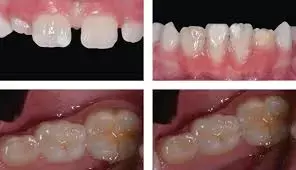- Home
- Medical news & Guidelines
- Anesthesiology
- Cardiology and CTVS
- Critical Care
- Dentistry
- Dermatology
- Diabetes and Endocrinology
- ENT
- Gastroenterology
- Medicine
- Nephrology
- Neurology
- Obstretics-Gynaecology
- Oncology
- Ophthalmology
- Orthopaedics
- Pediatrics-Neonatology
- Psychiatry
- Pulmonology
- Radiology
- Surgery
- Urology
- Laboratory Medicine
- Diet
- Nursing
- Paramedical
- Physiotherapy
- Health news
- Fact Check
- Bone Health Fact Check
- Brain Health Fact Check
- Cancer Related Fact Check
- Child Care Fact Check
- Dental and oral health fact check
- Diabetes and metabolic health fact check
- Diet and Nutrition Fact Check
- Eye and ENT Care Fact Check
- Fitness fact check
- Gut health fact check
- Heart health fact check
- Kidney health fact check
- Medical education fact check
- Men's health fact check
- Respiratory fact check
- Skin and hair care fact check
- Vaccine and Immunization fact check
- Women's health fact check
- AYUSH
- State News
- Andaman and Nicobar Islands
- Andhra Pradesh
- Arunachal Pradesh
- Assam
- Bihar
- Chandigarh
- Chattisgarh
- Dadra and Nagar Haveli
- Daman and Diu
- Delhi
- Goa
- Gujarat
- Haryana
- Himachal Pradesh
- Jammu & Kashmir
- Jharkhand
- Karnataka
- Kerala
- Ladakh
- Lakshadweep
- Madhya Pradesh
- Maharashtra
- Manipur
- Meghalaya
- Mizoram
- Nagaland
- Odisha
- Puducherry
- Punjab
- Rajasthan
- Sikkim
- Tamil Nadu
- Telangana
- Tripura
- Uttar Pradesh
- Uttrakhand
- West Bengal
- Medical Education
- Industry
Nano nano-hydroxyapatite effective conservative alternative to fluoride for remineralizing White spot lesions, suggests study

Nano nano-hydroxyapatite effective conservative alternative to fluoride for remineralizing White spot lesions suggests a study published in the Journal of Dentistry.
A study was done to assess the effect of nano-hydroxyapatite (nano-HAP) either with or without fluoride on white spot lesions (WSLs) in terms of remineralisation and colour change. An electronic search was carried out in MEDLINE via PubMed, Scopus, Web of Science, LILACS, Embase, Cochrane Library, Google Scholar, Grey literature, and hand search. There were no limitations in terms of language and date (till August 2024) and all studies meeting the inclusion criteria were included.
The outcome variables were enamel surface microhardness, enamel remineralisation rate, mineral content, and colour change. Different risk of bias tools were employed according to the study design.
The level of evidence was graded using the GRADE profiler. A total of 14 out of 422 studies met the inclusion criteria. Three out of 14 studies were in vivo, one was in situ, while ten of them were in vitro. All 14 studies investigated the nano-HAP effects on WSLs. Following the full-text reviews and statistical analysis, 12 out of 14 studies were only included in the meta-analysis, since the remaining two studies lacked comparable data (mean±SD). Results: Different forms of delivery for nano-HAP were reported in the included studies. Pure nano-HAP showed promising effects on enamel surface microhardness (MD = 9.29, 95 % CI [7.74, 10.84], p < 0.00001), and mineral gain (MD = 0.09, 95 % CI [0.05, 0.13], P < 0.0001) when compared to fluoride alone.
In addition, nano-HAP and fluoride demonstrated similar remineralisation abilities based on the DIAGNOdent™ readings (MD=0.09, 95 % CI [0.05, 0.13], p < 0.0001) There were no colour improvements within the WSLs following the application of nano-HAP (MD = -2.76, 95 % CI [-6.79, 1.27], p = 0.18). The intervention containing pure nano-HAP showed a promising remineralisation effect on WSLs in comparison to fluoride alone. However, there were no colour changes within WSLs following the use of nano-HAP. Limited number of clinical studies, high risk of bias, quality of the available studies, and relatively short follow-up periods failed to result in concrete evidence. The intervention containing pure nano-HAP showed a promising remineralisation effect in comparison to fluoride alone. Therefore, it might be an effective alternative to fluoride-containing agents.
Reference:
S Alajlan, Baysan A. The effect of nano-hydroxyapatite on white spot lesions: A systematic review and meta-analysis, Journal of Dentistry, Volume 151, 2024, 105402, ISSN 0300-5712. https://doi.org/10.1016/j.jdent.2024.105402.
Dr. Shravani Dali has completed her BDS from Pravara institute of medical sciences, loni. Following which she extensively worked in the healthcare sector for 2+ years. She has been actively involved in writing blogs in field of health and wellness. Currently she is pursuing her Masters of public health-health administration from Tata institute of social sciences. She can be contacted at editorial@medicaldialogues.in.
Dr Kamal Kant Kohli-MBBS, DTCD- a chest specialist with more than 30 years of practice and a flair for writing clinical articles, Dr Kamal Kant Kohli joined Medical Dialogues as a Chief Editor of Medical News. Besides writing articles, as an editor, he proofreads and verifies all the medical content published on Medical Dialogues including those coming from journals, studies,medical conferences,guidelines etc. Email: drkohli@medicaldialogues.in. Contact no. 011-43720751


